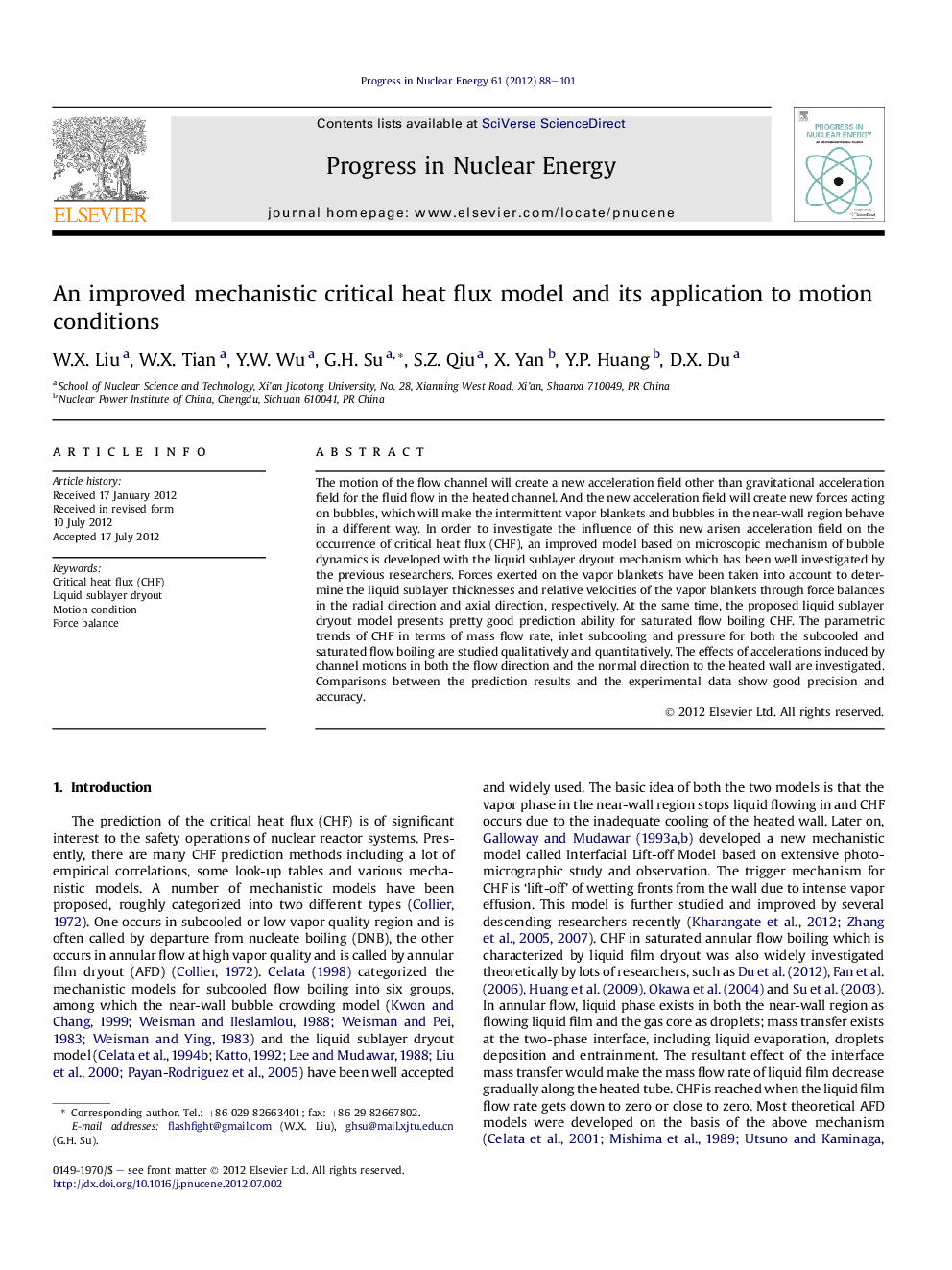| Article ID | Journal | Published Year | Pages | File Type |
|---|---|---|---|---|
| 1741046 | Progress in Nuclear Energy | 2012 | 14 Pages |
The motion of the flow channel will create a new acceleration field other than gravitational acceleration field for the fluid flow in the heated channel. And the new acceleration field will create new forces acting on bubbles, which will make the intermittent vapor blankets and bubbles in the near-wall region behave in a different way. In order to investigate the influence of this new arisen acceleration field on the occurrence of critical heat flux (CHF), an improved model based on microscopic mechanism of bubble dynamics is developed with the liquid sublayer dryout mechanism which has been well investigated by the previous researchers. Forces exerted on the vapor blankets have been taken into account to determine the liquid sublayer thicknesses and relative velocities of the vapor blankets through force balances in the radial direction and axial direction, respectively. At the same time, the proposed liquid sublayer dryout model presents pretty good prediction ability for saturated flow boiling CHF. The parametric trends of CHF in terms of mass flow rate, inlet subcooling and pressure for both the subcooled and saturated flow boiling are studied qualitatively and quantitatively. The effects of accelerations induced by channel motions in both the flow direction and the normal direction to the heated wall are investigated. Comparisons between the prediction results and the experimental data show good precision and accuracy.
► An improved CHF model is developed based on liquid sublayer mechanism. ► The model has good prediction ability for both subcooled and saturated flow boiling. ► Several possible forces in the axial and radial directions are considered. ► Influences of channel motions on CHF are investigated by considering force balances. ► The proposed model has clear physics meaning, good expansibility and accuracy.
